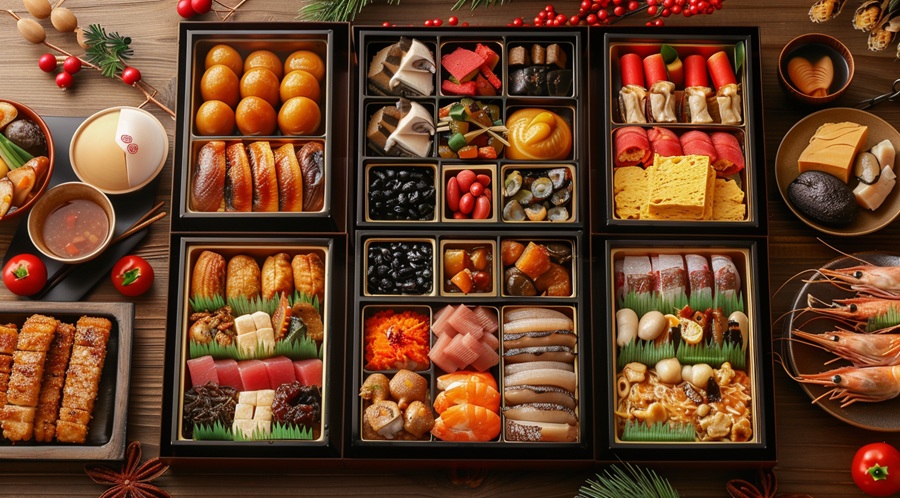
Osechi Ryori
Japanese Name
おせちりょうり
osechiryouri
Description
- Osechi Ryori is a traditional Japanese New Year’s cuisine, consisting of various colorful dishes packed neatly in special boxes called jubako. Each dish has a symbolic meaning, such as health, happiness, prosperity, or longevity. Common ingredients include sweet rolled omelet (datemaki), black soybeans (kuromame), and herring roe (kazunoko). The food is usually prepared before New Year’s Day to allow families to rest and celebrate together. The presentation is as important as the taste, reflecting aesthetic harmony and seasonal motifs. Osechi dishes are often sweet, salty, or pickled to preserve them for several days. Sharing osechi strengthens family bonds and expresses wishes for a good year ahead.
History
- Osechi Ryori dates back to the Heian period (794–1185) when nobles enjoyed special foods during the New Year. Originally, it was part of Shinto rituals to welcome deities and ensure a prosperous year. During the Edo period (1603–1868), the tradition spread to common people, who began preparing osechi at home. Each dish gradually gained symbolic meaning, such as black soybeans for health or tazukuri (candied sardines) for a bountiful harvest. The layered boxes, jubako, became popular in the Edo era, inspired by stacking lacquer boxes for storing valuables. Over time, osechi evolved from a ritual offering to a celebratory family meal. Modern versions may include Western or regional dishes while maintaining traditional symbolism.
Learn more Japanese words?
Play our free typing game and master Hiragana & Vocabulary in a Zen atmosphere. 🍵
🎮 Play Game